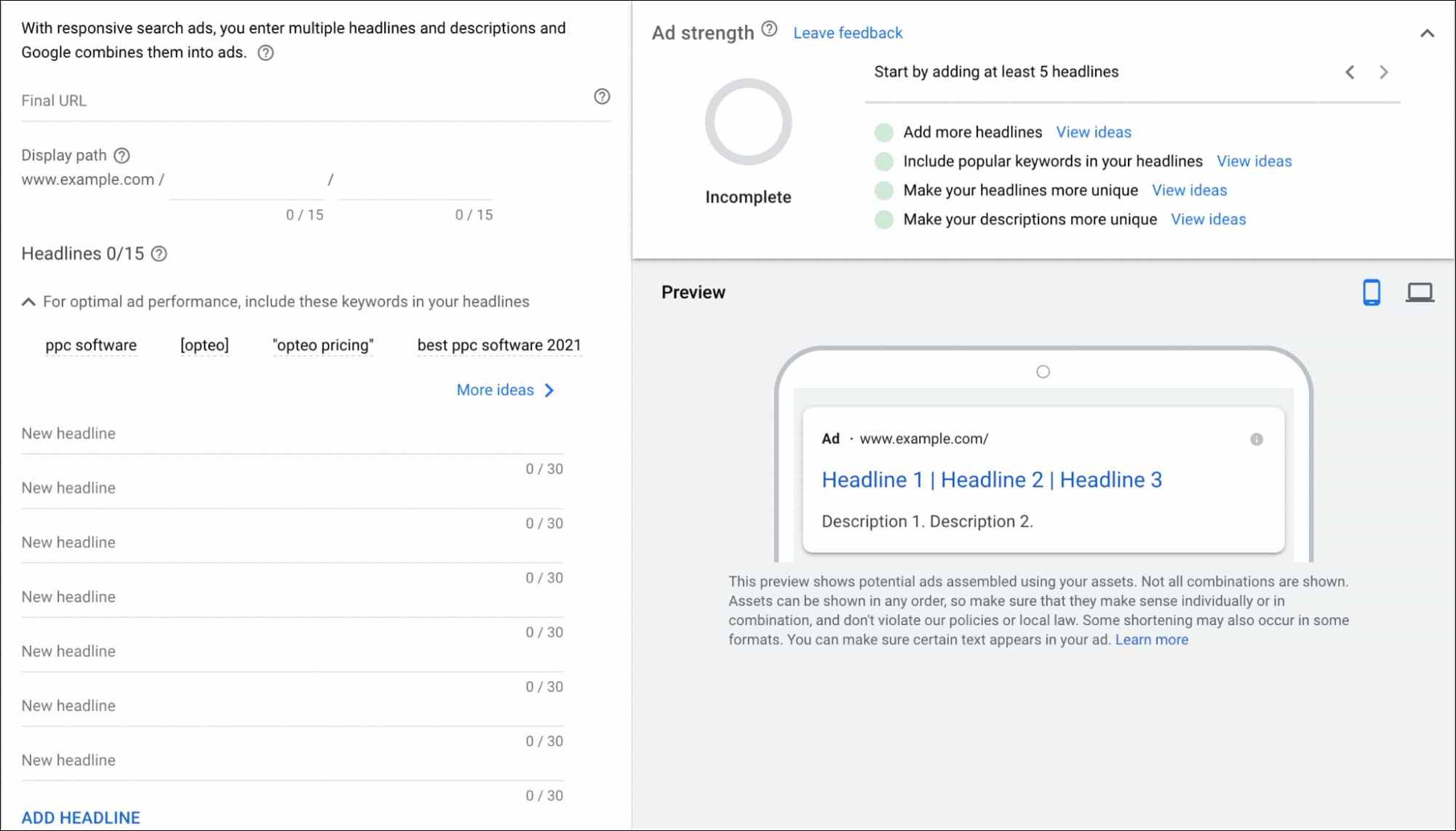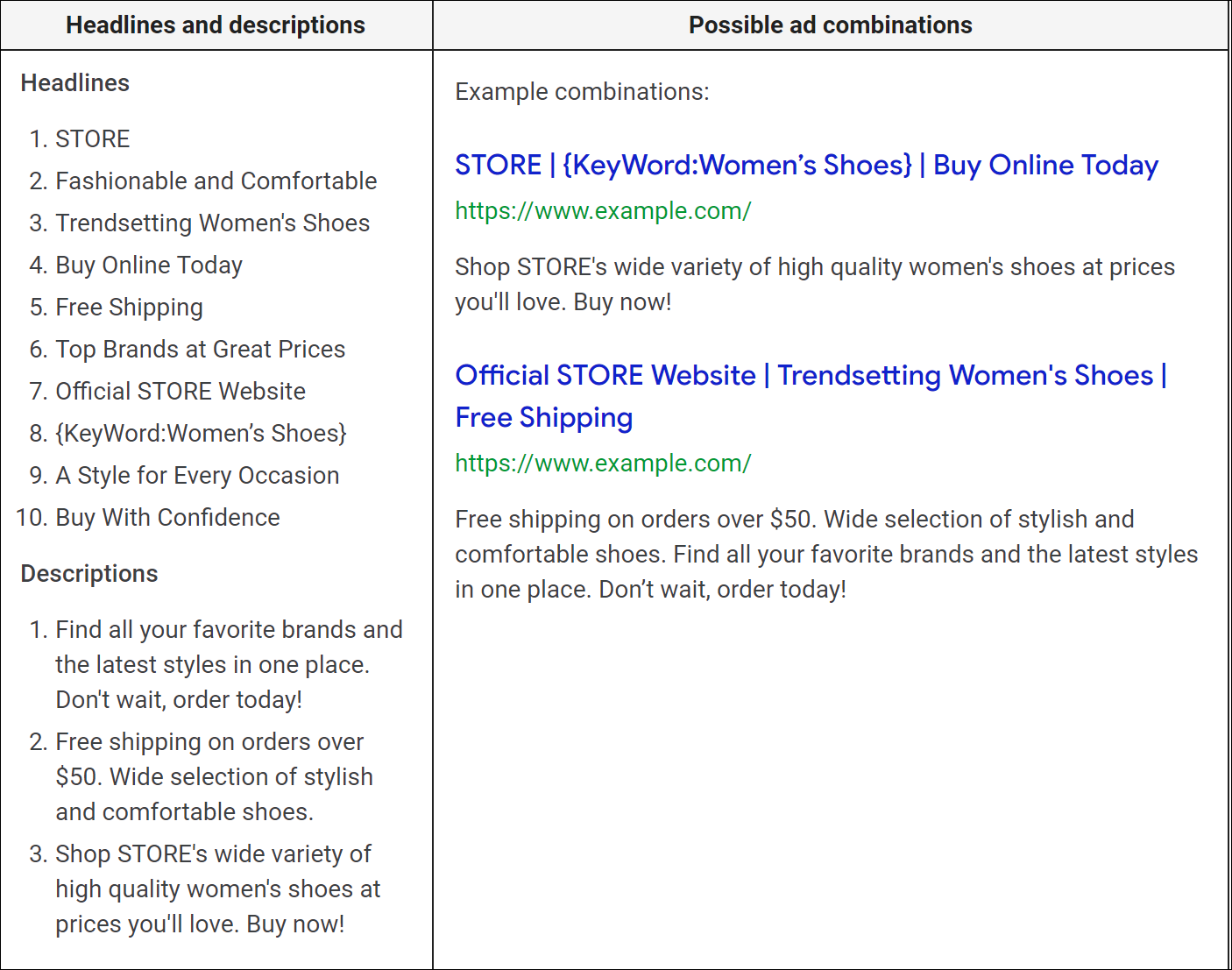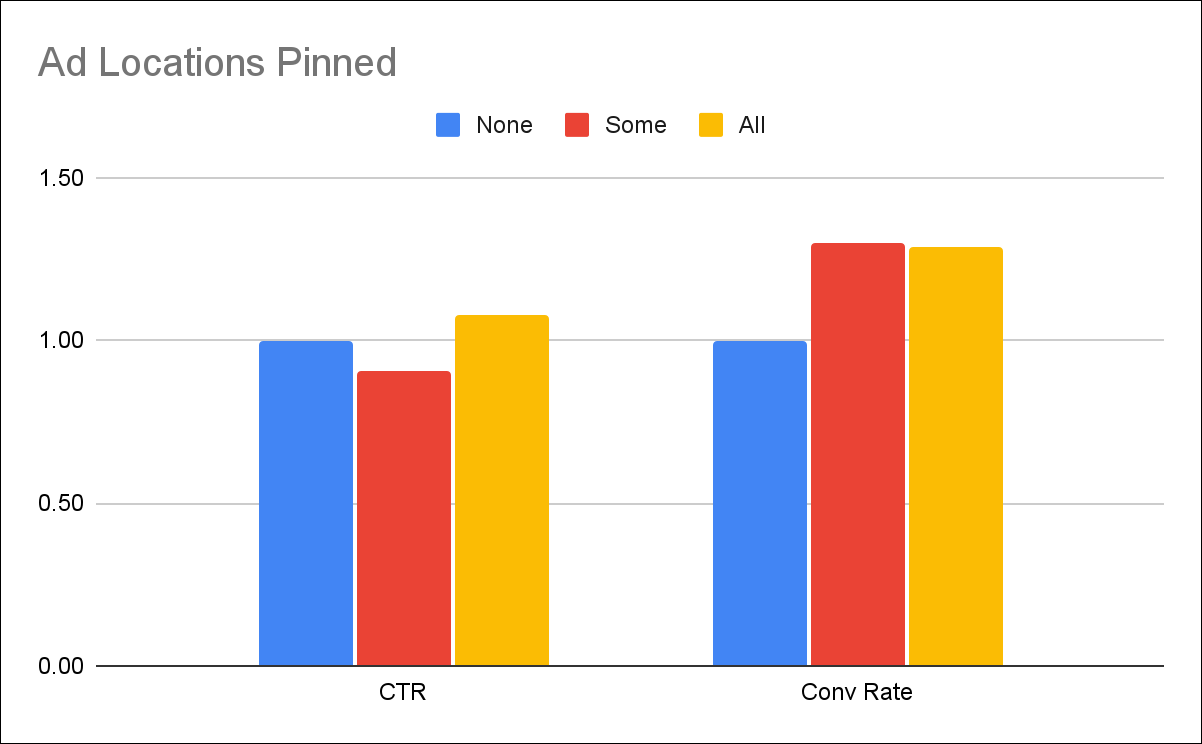Responsive Search Ads (RSAs) are text ads that allow PPC marketers to create multiple headlines and descriptions that are tested over time by Google’s machine learning and turned into relevant ads customized for the end-user based on their search query.
They were introduced in 2018 as a way to help advertisers find the winning combination of headlines and descriptions for effective text ads.
How do Responsive Search Ads work?
You create a bunch of different text components (a maximum of 15 headlines and 4 descriptions) and Google finds the best combination and serves ads to the end-users that lead to the highest CTR and best conversion rates.
 The more headlines and descriptions you provide, the more combinations it can generate.
The more headlines and descriptions you provide, the more combinations it can generate.
Responsive Search Ads Examples
Here’s an example of a Responsive Search Ad. On the left, there are 10 headline variations and 3 different descriptions. On the right, you see a couple of possible ad combinations.

Source: Google
Keep in mind that headlines and descriptions may appear in any order.
Initially, there’s a learning period for any new RSA, which means performance may not be what you’re used to right away. But once Google finds the best combination, you can see great results.
At Optmyzr, we carried out a study in 2022 on RSA performance by covering over 13,671 randomly chosen Optmyzr user accounts and answered questions like:
- Is RSA usage as common among advertisers as one thinks?
- How does RSA performance compare to that of ETAs?
- What effect do pinned headlines/descriptions have on performance?
We’ve presented the results by category so you can quickly find what’s most relevant to your goals.
One of our observations was we found that RSAs drive 4x of the impressions of a typical Expanded Text Ad (ETA).
This means that even with a slightly lower conversion rate, this 400% lift in impressions nets a lot of incremental conversions that should make advertisers very happy.
Read the full study here.
Google sunsetted Expanded Text Ads
In August 2021, Google announced that starting from July 2022, Responsive Search Ads (RSAs) will be the only search ad type in standard search campaigns.
Starting June 30, 2022, responsive search ads will be the only Search ad type that can be created or edited in standard Search campaigns. (Existing expanded text ads will still serve.)
— Google Ads (@GoogleAds) August 31, 2021
Learn more about this update and how to set up your ads for success → https://t.co/tvWACbq42d pic.twitter.com/lTgmfDPAbC
The official announcement, posted by Sylvanus Bent, Product Manager at Google Ads, added, “However, your existing Expanded Text Ads will continue to serve alongside Responsive Search Ads, and you’ll still see reports on their performance going forward. Additionally, you’ll be able to pause and resume your Expanded Text Ads or remove them if needed. You’ll also still be able to create and edit Call Ads and Dynamic Search Ads.”
This is a pretty big shift in how PPC marketers approach text ads. To know more about this, we spoke to Mark Irvine and Julie Bacchini, in June 2022 on our 58th episode of PPC Town Hall to learn how to make the most out of your RSAs moving forward.
Watch the full episode below:
Get actionable PPC tips, strategies, and tactics from industry experts twice a month.
What does this mean for PPC Marketers who still use Expanded Text Ads?
Expanded Text Ads are comfortable, and reliable, and offer you more control over what messages get shown and when. On the other hand, Responsive Search Ads can improve performance when combined with human optimization and creativity.
But since none of us can force Google to roll back its announcement, the best thing to do is adapt to RSAs.
Here’s a free Google Ads script for you to quickly migrate your ETAs to RSAs.
As with any other updates from Google, what we can do is unlearn, relearn, and adapt. Here are a few things to keep in mind as you get started with the transition from ETAs to RSAs:
1. Decide whether to pin headlines and descriptions.
Pinning headlines or descriptions to specific positions in your Responsive Search Ads is one way to show certain messages that always need to be visible. But be warned – pinning may affect ad strength, visibility, and performance.

Source: Optmyzr’s RSA study 2022
Verticals like pharmaceuticals (which require specific information in ads) and legal services (which require approval of each ad variant) might need to pin specific pieces of text, such as disclaimers and warnings in their ads. Google is yet to announce whether these industries with obligations will be assessed differently, or if there will be a workaround.
But should you be really pinning your assets? Here’s a clip from one of our Town Halls where Julie, Mark, and Fred discuss pinning.
As our CEO, Frederick Vallaeys says in this Search Engine Land article, unless you’re working in a field that absolutely requires certain information to be displayed, try not to pin components and instead put in the work to craft great RSAs.
2. Test your ad copy.
Create and test different versions of your ad assets at scale, and review their performance across multiple campaigns.
Yes, this means putting more effort than usual into high-quality ad copy that can work across combinations and permutations. But the payoff is rewarding when you have RSAs (up to 3 per ad group) that Google’s machine learning can test to find the best variants.
Read more about the right way to test Responsive Search Ads using Campaign Experiments.
Our other recommendations include:
- Repurposing high-performing content from your Expanded Text Ads
- Evaluating the success of your ads based on incremental absolute metrics – impressions, clicks, and conversions
Let the machines learn!
Responsive Search Ads are right in the sweet spot of machine learning within PPC. But for the machines to learn, you must give them a little time and space to explore.
Resist the urge to pin ad components when you don’t have to. And allow time for a test. It’s essential to feed the machine the appropriate ad components.
The machines are not coming up with new ad text on their own. They use the elements YOU provide, which means the machines can only be as successful as you’ve set them up to be.
It sort of goes without saying, but deploying the proven winners across your ads gives you a better chance at success.
If you’ve already created some Responsive Search Ads in your account but they’re underperforming, here’s how you can fix them:
How to Find and Fix Underperforming Responsive Search Ads
Get actionable PPC tips, strategies, and tactics from industry experts to your inbox once a month.










